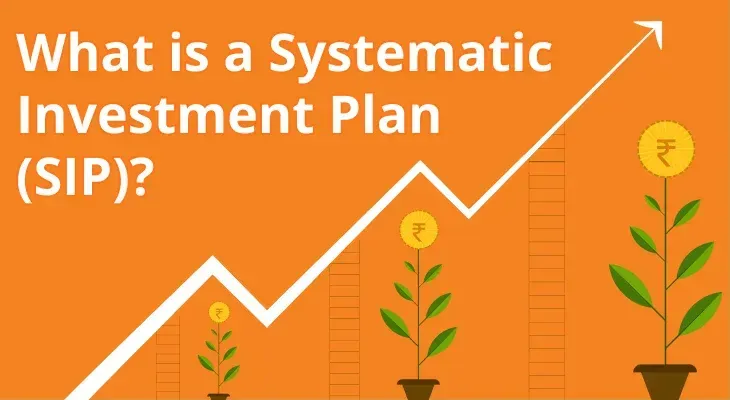
List of SIP Opportunities For a Monthly Investment of Rs. 2,000
Starting a Systematic Investment Plan in a mutual fund is a good way to ensure long-term wealth creation. The regular and consistent investments you need to make as part of this investment method can inculcate financial discipline, which is one of the key factors for steady financial growth. In addition to this, you also get to enjoy other benefits such as rupee cost averaging, which lowers your overall cost of investment, and compounding, which boosts your returns over time.
That said, not all mutual funds perform similarly given the same market conditions. This is precisely why it is important to pick the right funds to invest in. In this article, we’re going to take a look at some of the SIPs to invest in 2024 with an investment as low as just Rs. 2,000 per month. But before that, let’s quickly look at some of the crucial factors that you need to consider before investing in any SIP plan.
Things to Consider Before Investing in a Mutual Fund SIP
As an investor, you need to be aware of the various factors that need to be considered before starting an SIP in a mutual fund. This will help you make a well-informed investment decision. Here’s a quick overview of some of the key factors.
Determine Your Goals
Your financial goals play a huge role in selecting the type of mutual fund you need to invest in. Therefore, it is crucial to determine and lay out your goals first. Once you’ve done that, you’ll find it easy to choose the fund to invest in.
For instance, if your goal is to secure your post-retirement life, you can consider investing in an equity-oriented fund. On the other hand, if your goal is to ensure a supplementary source of income, you may choose to invest in a high-quality debt fund or corporate bond fund.Start A Separate SIP For Each Goal
Once you’ve determined your financial goals, the next thing you need to focus on is starting a separate SIP for each goal you may have. Separate SIPs can help you track fund performance and manage your investments much better.
For instance, if your goals are to create a corpus for your child’s higher education and to have a secondary source of income, you can consider starting SIPs on both an equity fund and a debt fund separately.Choose Investments Based On Your Risk Profile
Your risk tolerance and profile are another major factor you need to consider when starting a Systematic Investment Plan in a mutual fund. Always consider investing in a fund that matches your risk profile.
For instance, if you have a high tolerance for risk, you can consider investing in equity-oriented funds. On the other hand, if you’re a more conservative investor, you may choose to invest in a debt fund. And finally, if you have moderate risk tolerance, you can consider investing in a hybrid fund with both equity and debt components.Performance Evaluation
Every mutual fund, even if you invest via a Systematic Investment Plan, requires periodic performance evaluation. This helps you determine whether the fund is performing as per your expectations or not. Furthermore, regular evaluation lets you take timely corrective measures if the performance doesn’t match your financial goals.
Top SIP plans for a Monthly Investment of Rs. 2,000
If you’re looking for some SIP plans for a Rs. 2,000 per month investment, here are some options you can consider investing in.
Quant Mid-Cap Fund Direct-Growth
Launched in 2013, the Quant Mid-Cap Fund is a mutual fund that primarily invests in mid-cap and large-cap companies. Asset class wise, the fund invests 91.94% in equity, 7.53% in debt and 0.53% in cash and others. Ideal for investors looking for returns outperforming the market, the fund is categorised as high risk. The expense ratio of the fund is just 0.76%, making it a good SIP to invest in 2024 in terms of cost.
Axis Small Cap Fund Direct-Growth
The Axis Small Cap Fund was launched in 2014 by Axis Asset Management Company Limited. The fund focuses on investing in high-quality small-cap companies, with over 88.09% in equity, and 11.96% exposure to debt. Aggressive investors with a high tolerance for risk can consider investing in the Axis Small Cap Fund. Although it is an actively managed fund, the expense ratio is just 0.54%.
Canara Robeco BlueChip Equity Fund Direct-Growth
A large-cap mutual fund that invests exclusively in blue-chip companies with strong fundamentals, the Canara Robeco BlueChip Equity Fund was launched in 2010. Around 95.57% of the fund’s total assets have been allocated towards equity stocks and about 4.47% is in debt instruments. Unlike the other two options listed above, the fund is moderately risky and is ideal for long-term investors. However, the expense ratio of the fund is 1.71%.
Quant Tax Plan Direct-Growth
The Quant Tax Plan fund is an Equity-Linked Savings Scheme (ELSS), which is a type of mutual fund with a mandatory 3-year lock-in period. Asset class wise, the fund invests 91.94% in equity, 7.53% in debt and 0.53% in cash and others. One of the primary advantages of the Quant Tax Plan fund is that SIP investments you make can be claimed as a deduction from your total income under section 80C of the Income Tax Act. The maximum amount that you can claim in a financial year is limited to Rs. 1.5 lakhs. If you're interested in saving tax, the Quant Tax Plan fund is one SIP you can consider to invest in 2024.
UTI Nifty 50 Index Fund Direct-Growth
Launched in 2013, the UTI Nifty 50 index fund is a mutual fund that seeks to replicate the performance of the Nifty 50 index. The stocks in its portfolio mirror those included in the broad-market index. Thanks to it being a passively managed fund, the expense ratio is quite low at just 0.21%. If you’re interested in a cost-effective mutual fund with returns close to what the broad market generates, the UTI Nifty 50 Index Fund is a popular SIP to invest in.
Conclusion
With this, you must now be aware of some of the SIP plans you can start investing in 2024. Whether your monthly investment amount is as low as just Rs. 2,000 or as high as Rs. 10,000, investing in these funds may get you closer to your financial goals. That said, mutual funds and the stock market in general can be very volatile and unpredictable. Therefore, it is advisable to thoroughly research the various risks involved before investing.
FAQ
What separates a feeder fund from a typical mutual fund?
A feeder fund transfers its investments to a master fund, whereas a regular mutual fund invests directly in equities.
How do feeder funds manage risk?
Feeder funds diversify their investments over numerous master funds, which reduces risk and increases portfolio resilience.
Can feeder funds invest internationally?
Yes, feeder funds can participate in overseas markets via master funds, giving investors access to a wide range of investment options.
Are feeder funds good for new investors?
While feeder funds provide professional management, inexperienced investors should conduct extensive research and obtain expert advice before investing.
Can feeder funds guarantee a return?
Feeder funds, like all investments, are susceptible to market fluctuations and cannot guarantee returns. However, they have the ability to grow and generate income in the long run.
How can investors monitor the performance of their feeder fund investments?
Investors may track the performance of feeder funds by receiving regular updates from the fund manager, as well as periodic statements and reports.
What factors should investors think about before investing in a feeder fund?
Investors should consider investing goals, cost structures, and the feeder and master funds' track records.


